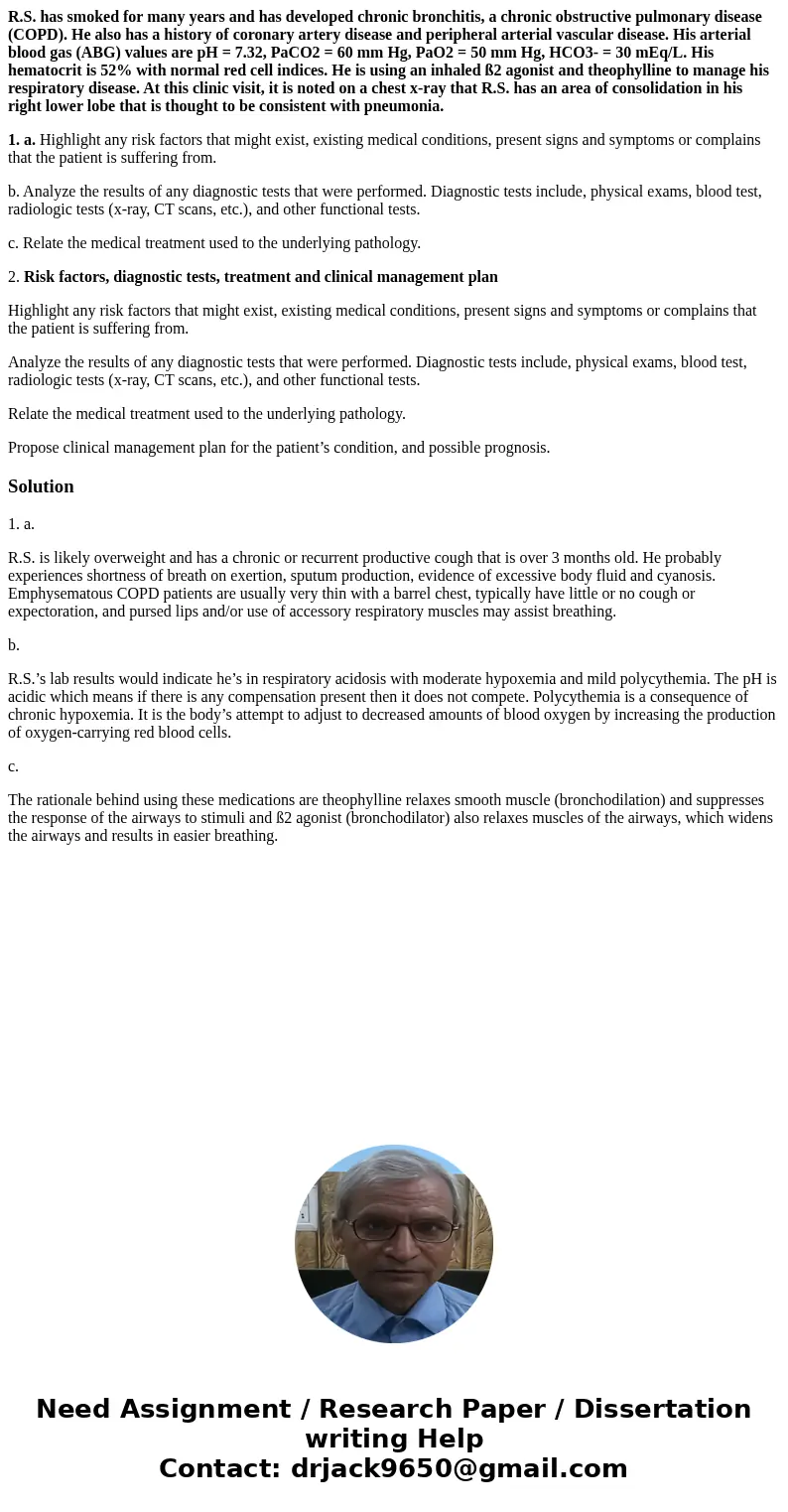RS has smoked for many years and has developed chronic bronc
R.S. has smoked for many years and has developed chronic bronchitis, a chronic obstructive pulmonary disease (COPD). He also has a history of coronary artery disease and peripheral arterial vascular disease. His arterial blood gas (ABG) values are pH = 7.32, PaCO2 = 60 mm Hg, PaO2 = 50 mm Hg, HCO3- = 30 mEq/L. His hematocrit is 52% with normal red cell indices. He is using an inhaled ß2 agonist and theophylline to manage his respiratory disease. At this clinic visit, it is noted on a chest x-ray that R.S. has an area of consolidation in his right lower lobe that is thought to be consistent with pneumonia.
1. a. Highlight any risk factors that might exist, existing medical conditions, present signs and symptoms or complains that the patient is suffering from.
b. Analyze the results of any diagnostic tests that were performed. Diagnostic tests include, physical exams, blood test, radiologic tests (x-ray, CT scans, etc.), and other functional tests.
c. Relate the medical treatment used to the underlying pathology.
2. Risk factors, diagnostic tests, treatment and clinical management plan
Highlight any risk factors that might exist, existing medical conditions, present signs and symptoms or complains that the patient is suffering from.
Analyze the results of any diagnostic tests that were performed. Diagnostic tests include, physical exams, blood test, radiologic tests (x-ray, CT scans, etc.), and other functional tests.
Relate the medical treatment used to the underlying pathology.
Propose clinical management plan for the patient’s condition, and possible prognosis.
Solution
1. a.
R.S. is likely overweight and has a chronic or recurrent productive cough that is over 3 months old. He probably experiences shortness of breath on exertion, sputum production, evidence of excessive body fluid and cyanosis. Emphysematous COPD patients are usually very thin with a barrel chest, typically have little or no cough or expectoration, and pursed lips and/or use of accessory respiratory muscles may assist breathing.
b.
R.S.’s lab results would indicate he’s in respiratory acidosis with moderate hypoxemia and mild polycythemia. The pH is acidic which means if there is any compensation present then it does not compete. Polycythemia is a consequence of chronic hypoxemia. It is the body’s attempt to adjust to decreased amounts of blood oxygen by increasing the production of oxygen-carrying red blood cells.
c.
The rationale behind using these medications are theophylline relaxes smooth muscle (bronchodilation) and suppresses the response of the airways to stimuli and ß2 agonist (bronchodilator) also relaxes muscles of the airways, which widens the airways and results in easier breathing.

 Homework Sourse
Homework Sourse